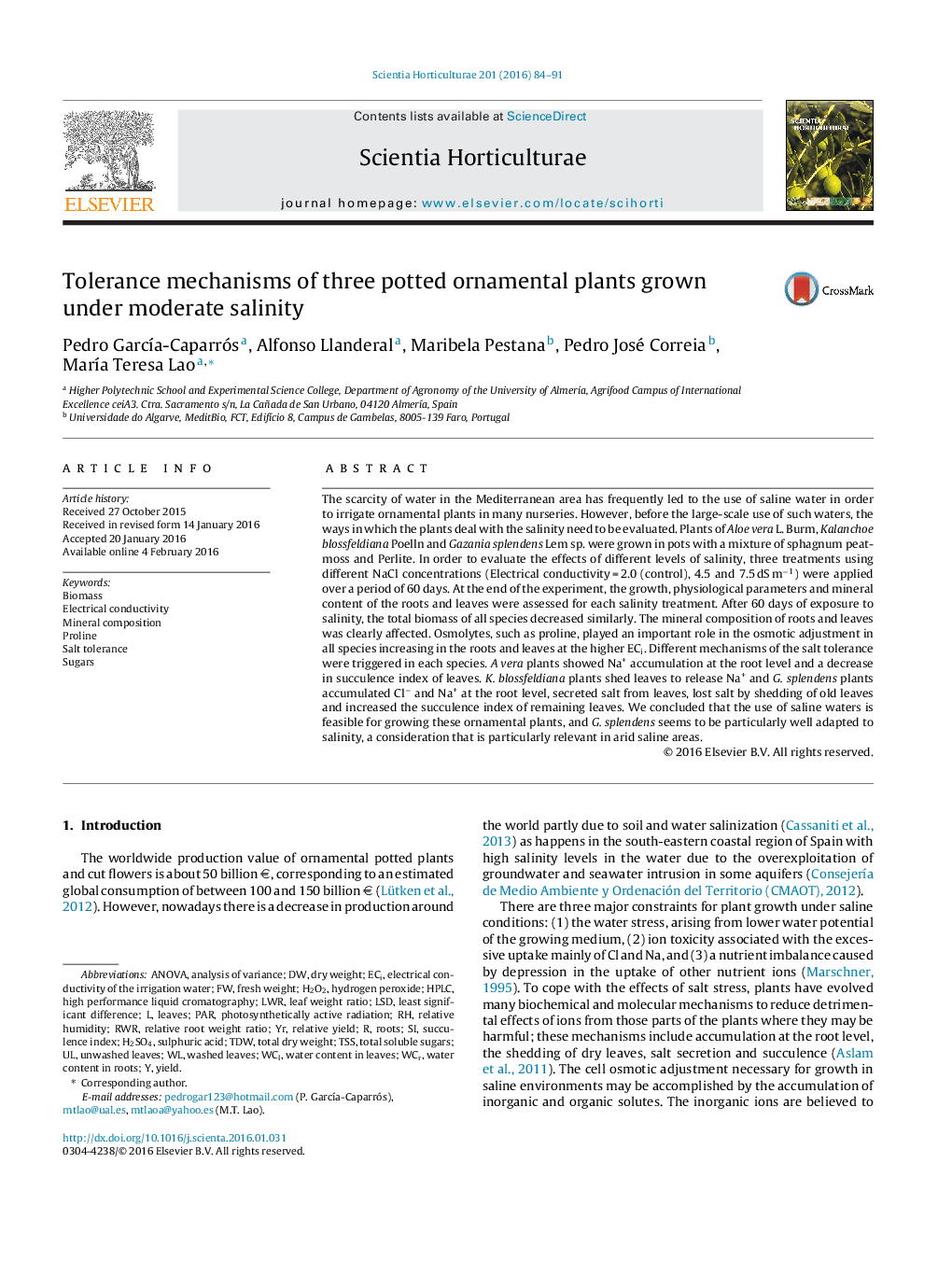| کد مقاله | کد نشریه | سال انتشار | مقاله انگلیسی | نسخه تمام متن |
|---|---|---|---|---|
| 6406358 | 1628797 | 2016 | 8 صفحه PDF | دانلود رایگان |
- All species showed similar decrease on total biomass under salinity.
- Mineral content of all species was clearly affected by salinity.
- Aloe vera performed Na+ accumulation at root level and succulence decrease in leaves.
- Plants shed dry leaves to avoid Na+ accumulation.
- Gazania splendens was the best species adapted to salinity.
The scarcity of water in the Mediterranean area has frequently led to the use of saline water in order to irrigate ornamental plants in many nurseries. However, before the large-scale use of such waters, the ways in which the plants deal with the salinity need to be evaluated. Plants of Aloe vera L. Burm, Kalanchoe blossfeldiana Poelln and Gazania splendens Lem sp. were grown in pots with a mixture of sphagnum peat-moss and Perlite. In order to evaluate the effects of different levels of salinity, three treatments using different NaCl concentrations (Electrical conductivity = 2.0 (control), 4.5 and 7.5 dS mâ1) were applied over a period of 60 days. At the end of the experiment, the growth, physiological parameters and mineral content of the roots and leaves were assessed for each salinity treatment. After 60 days of exposure to salinity, the total biomass of all species decreased similarly. The mineral composition of roots and leaves was clearly affected. Osmolytes, such as proline, played an important role in the osmotic adjustment in all species increasing in the roots and leaves at the higher ECi. Different mechanisms of the salt tolerance were triggered in each species. A vera plants showed Na+ accumulation at the root level and a decrease in succulence index of leaves. K. blossfeldiana plants shed leaves to release Na+ and G. splendens plants accumulated Clâ and Na+ at the root level, secreted salt from leaves, lost salt by shedding of old leaves and increased the succulence index of remaining leaves. We concluded that the use of saline waters is feasible for growing these ornamental plants, and G. splendens seems to be particularly well adapted to salinity, a consideration that is particularly relevant in arid saline areas.
Journal: Scientia Horticulturae - Volume 201, 30 March 2016, Pages 84-91
